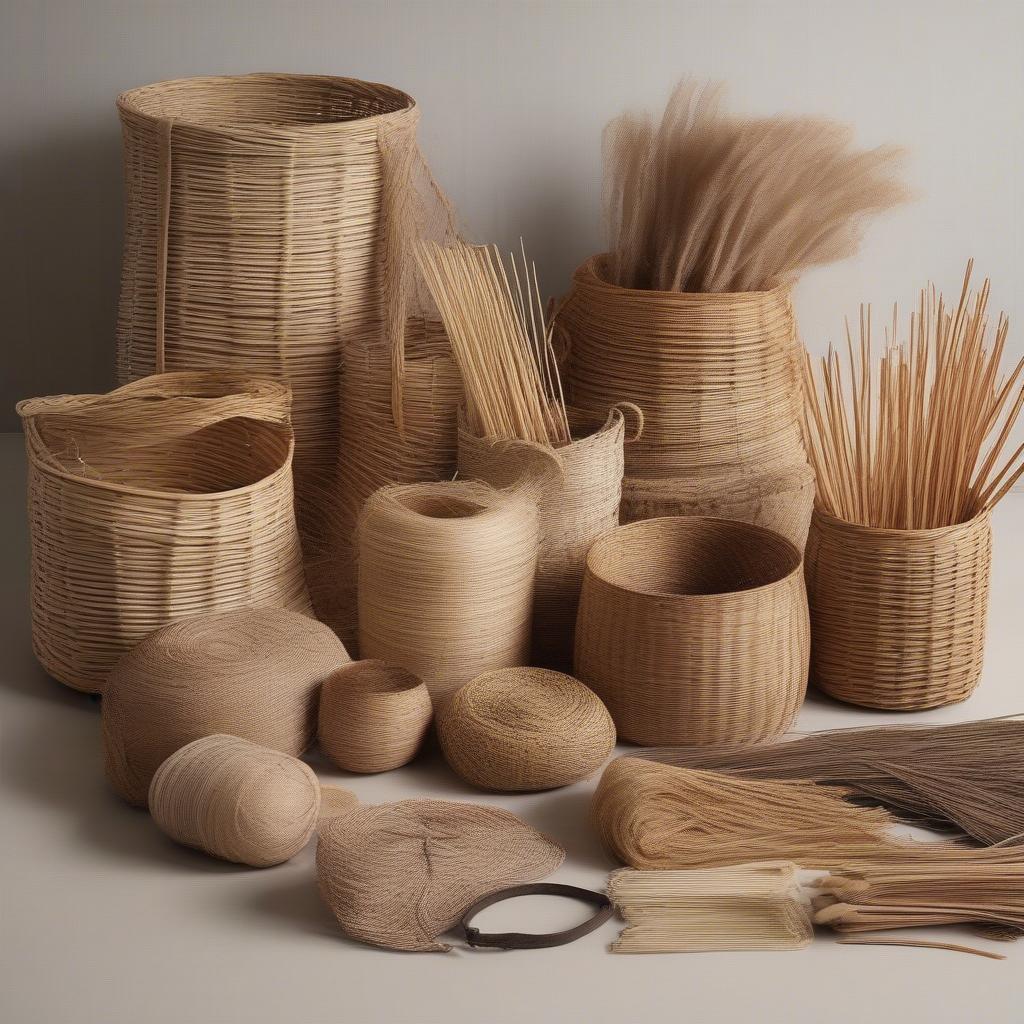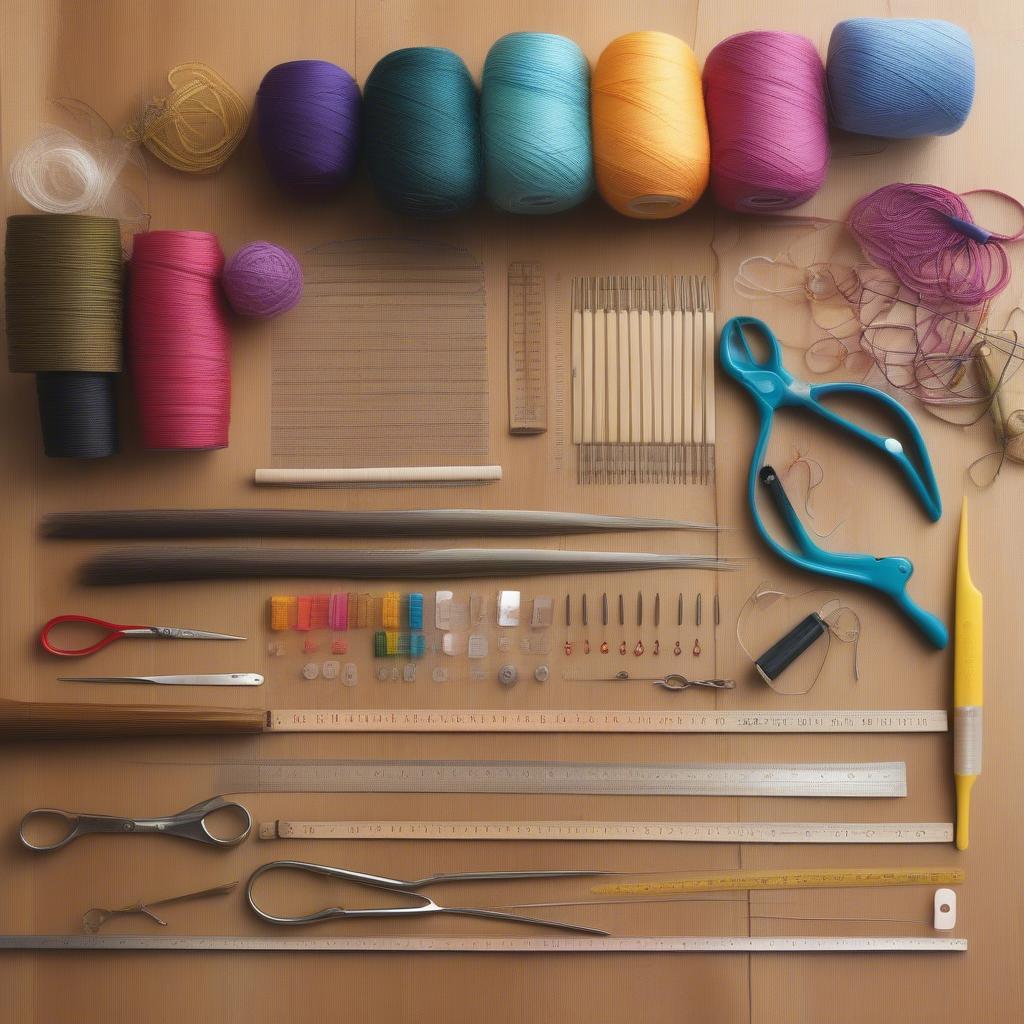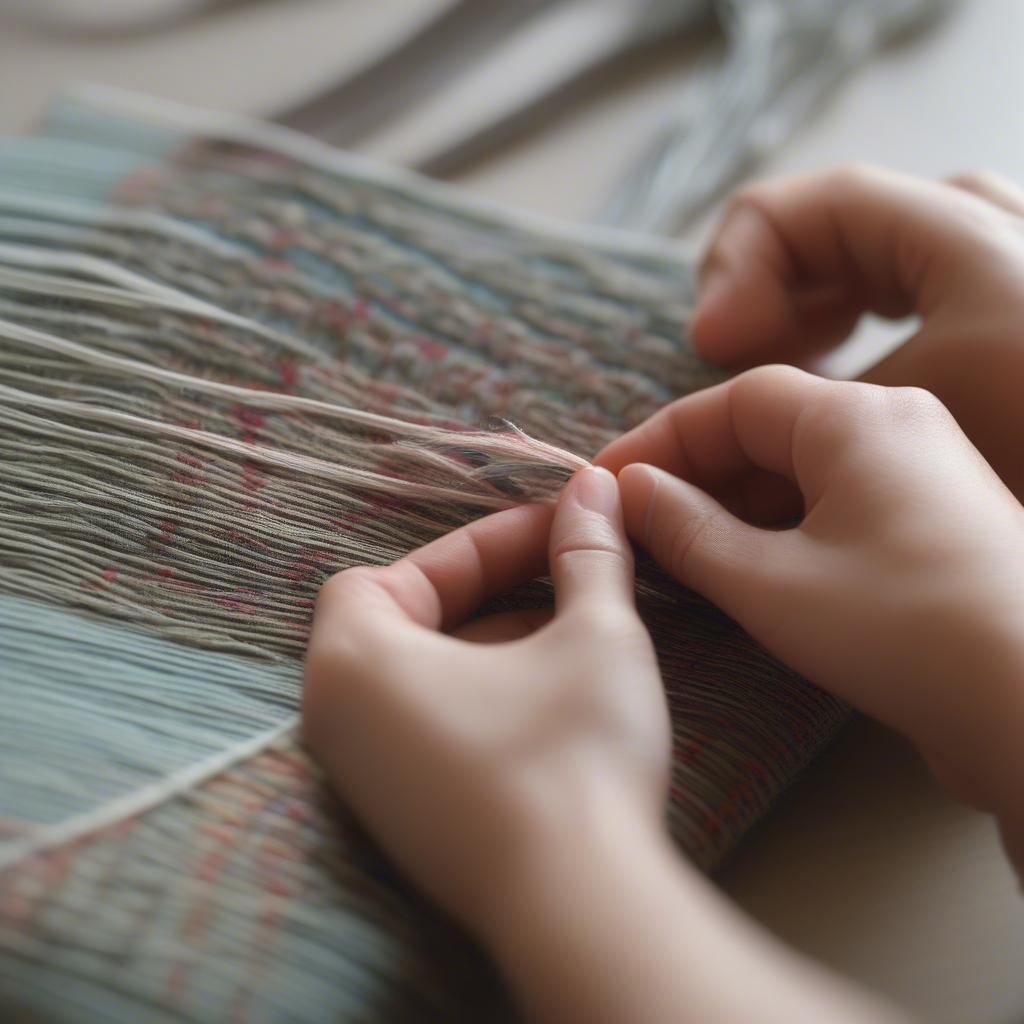Basket Weaving
DIY Weaving Pouch, Bag, or Cover: A Comprehensive Guide
Creating your own woven pouch, bag, or cover is a rewarding experience that combines creativity with practicality. Whether you’re a seasoned weaver or just starting out, this guide will provide you with the knowledge and inspiration to craft your own unique piece.
Choosing Your Materials for DIY Weaving
The first step in your DIY weaving journey is selecting the right materials. From natural fibers like wicker and rattan to more unconventional options like recycled plastic or fabric scraps, the possibilities are endless. Consider the desired look and feel of your finished product, as well as its intended use. A sturdy rattan bag might be perfect for grocery shopping, while a delicate woven pouch made from colorful yarn could hold your precious jewelry.
Natural Fibers: Wicker, Rattan, and More
Wicker and rattan are popular choices for their durability and natural beauty. Wicker refers to the weaving process itself, while rattan is a specific type of palm that yields a strong and flexible material. Other natural fibers to consider include bamboo, seagrass, and hemp. These materials offer unique textures and can add an earthy touch to your creations.
Exploring Unconventional Materials
Don’t be afraid to think outside the box! Recycled plastic bags, t-shirt yarn, or even old fabric scraps can be woven into beautiful and functional items. This is a great way to upcycle materials and create truly one-of-a-kind pieces.
 DIY Weaving Materials: Natural Fibers like Rattan and Wicker
DIY Weaving Materials: Natural Fibers like Rattan and Wicker
Essential Tools for Weaving Your Own Pouch or Bag
Having the right tools will make your weaving project much smoother. While some projects can be completed with simple tools like a needle and thread, others may require specialized equipment.
Basic Weaving Tools
A sturdy pair of scissors, a measuring tape, and some pins or clips will be essential for almost any weaving project. You’ll also need a needle or a weaving shuttle to help you pass the weaving material through the warp threads.
Advanced Weaving Tools
For more complex projects, consider investing in a loom. Looms come in various sizes and styles, from simple frame looms to more intricate floor looms. A loom can help you create more even and consistent weaves.
 Essential Weaving Tools for Beginners: Scissors, Needles, and Measuring Tape
Essential Weaving Tools for Beginners: Scissors, Needles, and Measuring Tape
Step-by-Step Guide to DIY Weaving a Simple Pouch
Let’s start with a simple project: a small woven pouch. This project is perfect for beginners and can be completed with basic materials and tools.
- Prepare your materials: Cut your chosen weaving material into strips of equal length.
- Create the warp: Create a foundation for your weave by stringing several parallel strands of your weaving material. These strands will form the warp of your pouch.
- Begin weaving: Using your needle or shuttle, weave the remaining strips of material over and under the warp threads.
- Continue weaving: Repeat the weaving process, alternating over and under patterns, until you reach the desired length of your pouch.
- Secure the ends: Tie off the loose ends of the weaving material to secure the weave.
- Add a closure: You can add a simple button or tie closure to your pouch.
Tips for Beginners
- Start with a simple weaving pattern.
- Don’t be afraid to experiment with different materials.
- Practice makes perfect!
 Step-by-Step DIY Weaving a Simple Pouch: Weaving Process
Step-by-Step DIY Weaving a Simple Pouch: Weaving Process
Weaving Inspiration: Exploring Different Designs and Techniques
Once you’ve mastered the basics, you can explore more complex designs and techniques. From intricate patterns to different weaving styles, the possibilities are endless. Consider adding embellishments like beads, feathers, or tassels to personalize your creations.
Conclusion: Embrace the Art of DIY Weaving
Creating your own diy weaving pouch, bag, or cover is a fulfilling and creative process. Whether you’re looking for a practical storage solution or a unique fashion accessory, weaving allows you to express your artistic flair. So gather your materials, grab your tools, and start weaving!
FAQ
- What is the best material for beginners to use for weaving?
- What are the basic tools needed for weaving?
- How do I create a simple weaving pattern?
- Where can I find inspiration for weaving designs?
- What are some common mistakes to avoid when weaving?
- How do I care for my woven items?
- Where can I find more resources to learn about weaving?
For further assistance, please contact our 24/7 customer support at Hotline: +84 388 951 999, or visit our offices located in Hanoi, Vietnam and Tech Avenue, Suite 12, San Francisco, CA 94105, USA.
